Recruitment: Recruitment Overview: Workflow: Recruitment
Purpose
This document will cover the basic workflow of hiring an employee through the Odoo Recruitment application. Throughout, there will be links to other relevant documentation as needed to preserve the flow of this document from start to finish.
Process
To get started, navigate to the Recruitment application.

Posting Positions
To start searching for new employees, you must first create a job position to fill. By default, when opening the Recruitment app, job positions is the first view that you land on. Here, you can see the number of positions you are currently hiring for, and edit their website components. On each Job Position card, there is a green button to view outstanding applications.
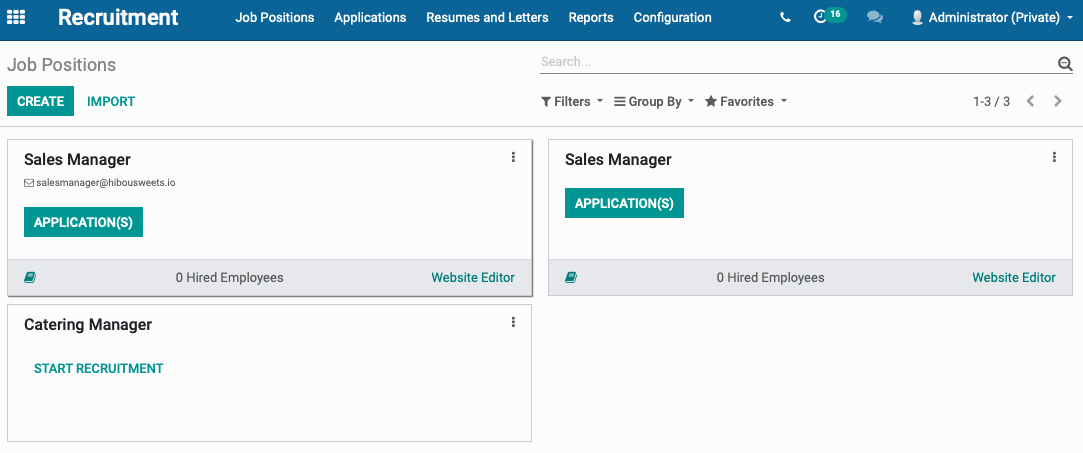
Let's view our website post for the Sales Manager position. Click on the green link in the bottom of the card, Website Editor.
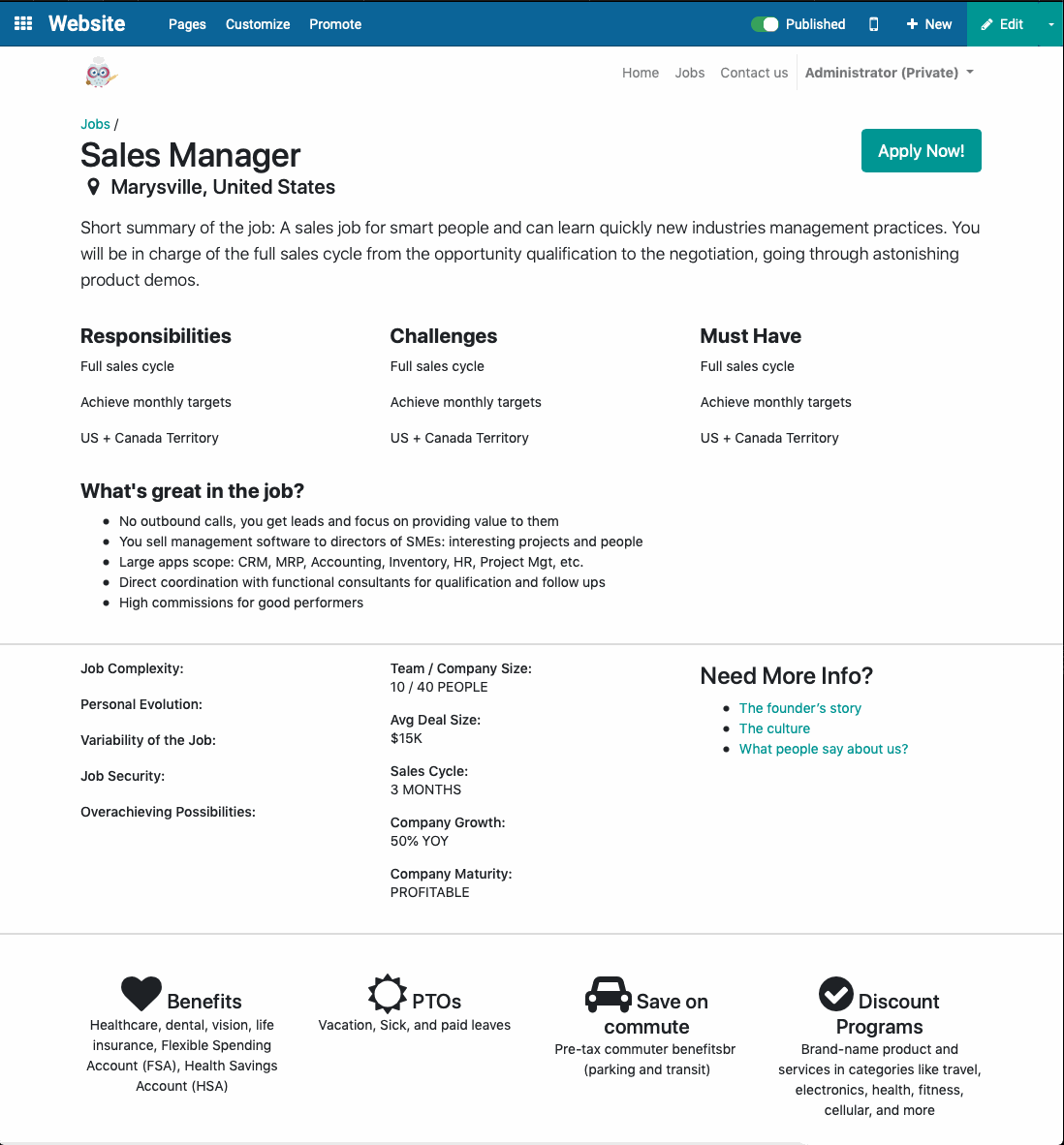
There is a default job posting template in place that can be customized using the Edit smart button at the top. This will open a widget menu column on the left and allow for drag-and-drop additions or rearrangement of the template. For more information, see our Website documentation.
Once the posting has been polished as desired, click the Save button in the top right corner. Once the posting is saved, click on the toggle next to Unpublished and this will publish the page so that external users can view the webpage and apply to the job posting.
The Apply Now button on the post will open the following window:
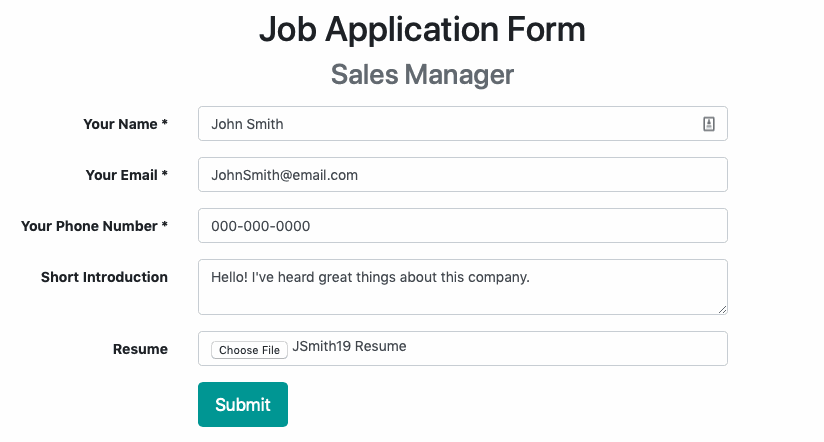
This page is also customizable via the website editor. More importantly, it will allow your applicants to upload their resumes!
When John Smith submits his resume as seen above, it will be uploaded to our database.
Let's look at the applications we've received so far, either by clicking on the Applications(s) button on the job position card, or by going to Applications > All Applications in the navigation menu.
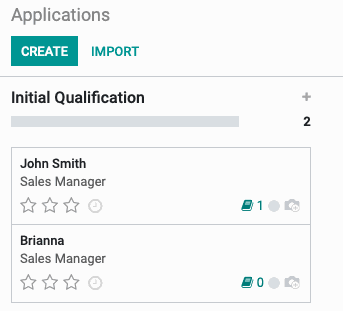
We can see that two people are interested in this position. John's application has a document attached, as seen by the # Icon. If we go to Resumes and Letters, we'll see John's resume is available for download, and some information about the file.
The resume can be stored and viewed in Odoo's Documents application by clicking the Edit button and assigning a Folder and Tags. Resumes are searchable by the content and keywords within them, such as secondary languages, degrees, or any other key information that may narrow down the possible choices.
Simply search for your desired keywords in the Search bar on the Resumes and Letters page and any resumes that contain those keywords will appear.

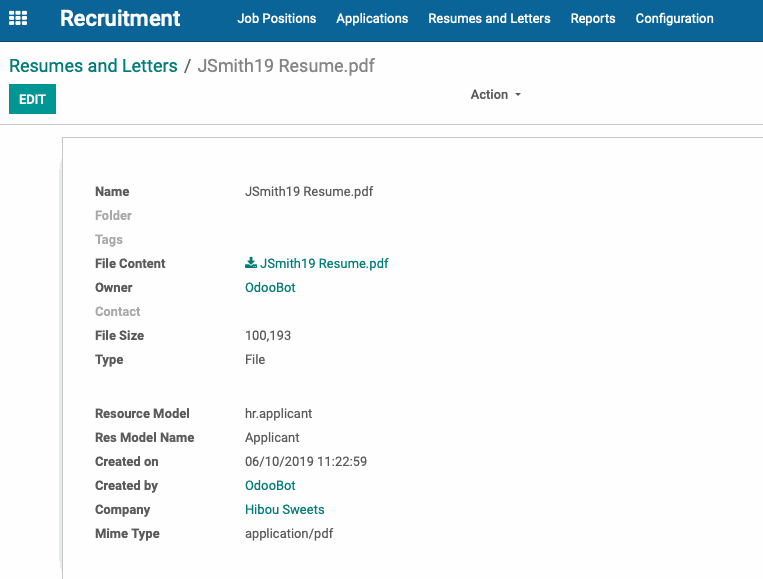
Under Applications > All Applications, open John's card, and you will see the following.
Contact: If there is a contact record available, it will display here for reference.
Email: Filled from application.
Phone: Filled from application.
Mobile: Applicant's personal cell number, if available.
Degree: Applicant's educational history, if known.
Responsible: HR Employee handling the application.
Appreciation: A three star rating used to determine best-fit, and for filtering.
Source: If the applicant was referred by a third-party hiring resource such as Monster or Indeed, it will appear here. Note these must be configured before use.
Referred By: Used to indicate how the applicant found the job posting, i.e. a current employee, a contracted temp agency, etc.
Job:
Applied Job: The position/job posting the applicant responded to.
Department: The parent department where the job was posted.
Contract:
Expected Salary: Salary that the applicant is seeking.
Proposed Salary: Salary proposed by your company for this position.
Availability: The date on which the applicant is available to start working.
John's resume is available through the Documents smart button and looks like a good fit. Let's schedule an interview!
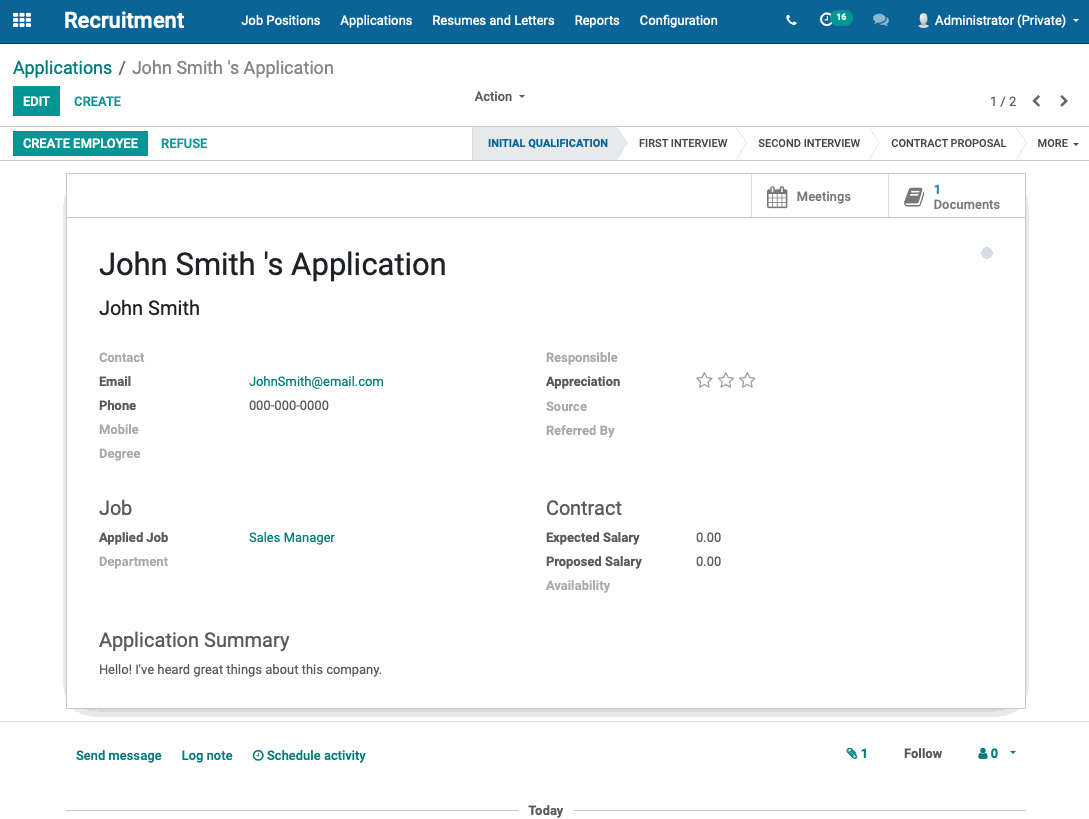
Scheduling an Interview
There are a few ways to schedule an interview with a potential hire. The application will remain within the Initial Qualification stage until it is moved. By default, simply moving the application to the First Interview stage will send the below email to the applicant.
This Applicant: Interest template can be tailored to fit your needs by an Administrator in debug mode, under Technical Settings.
Sent in this manner, there will not be an option to edit the generic template before it is sent. If this function is not desired, the automation can be turned off in your Stage settings.

Another method is to schedule an interview is using Activities. To create a custom Activity, review the Activities section of our Recruitment Overview document.
During configuration, we illustrated a sample interview activity. Let's use it now to get John on the phone for a video call and introduce ourselves.
At the bottom of John's application, select Schedule Activity and the First Interview activity. As this is a meeting, the modal window will appear slightly different than normal, shown below.
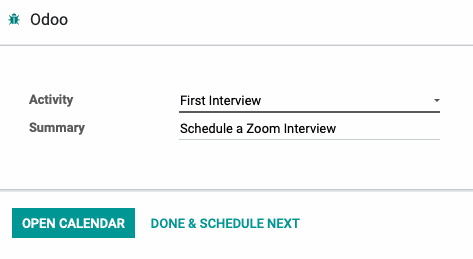
Clicking the Open Calendar button will take us to the Calendar app. Select a time slot and the meeting title will be pre-filled with the Summary of the meeting activity. Click CREATE to save the record.
If you would like to add attendees other than John, click the EDIT button to add them to the record.

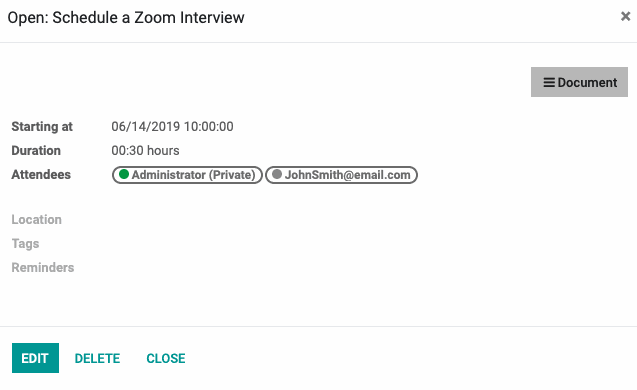
Scheduling an interview via a meeting activity has the added bonus of a documents link appearing on the meeting record, returning the user to the application and any related interview surveys quickly.
Returning to John's application via the Document button, we can see the new activity below Planned Activities. Because this activity type has an associated mail template, we have the option to PREVIEW and edit the assigned template before sending, or to email the generic template without editing using the SEND NOW link.

Interview Surveys
Let's take a quick detour to the Surveys application to review an interview form and its sharing options. We will not cover the various configurations available in this document, so for more information, see our Surveys documentation.
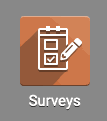
Under our permanent templates column, we have a Recruitment Form survey.
If needed, we can Test, Share & Invite, and Analyze Answers (#), directly from the kanban view.

Using the Share & Invite link, the survey will open a modal window providing a few options, as seen below:
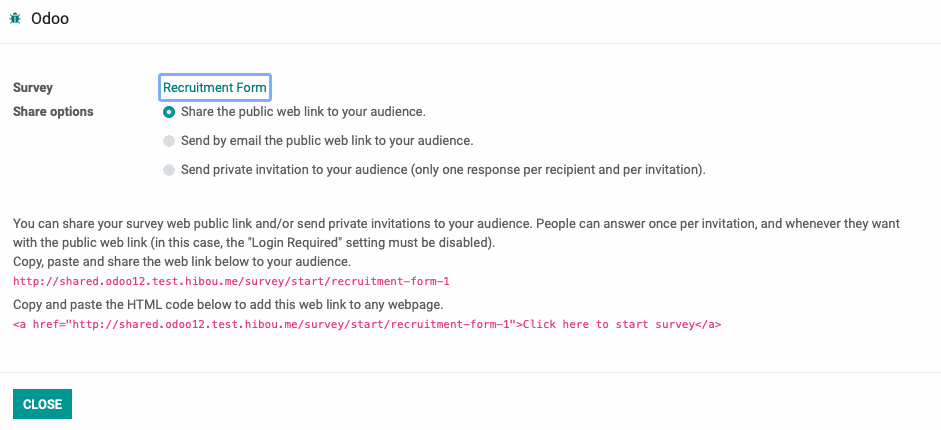
When the survey is completed, you will be able to review the answers, and, if Quiz Mode is enabled, assign a score to let the applicant know how to they performed. From there, if John has passed our performance test and interviewed well, we'll be ready to make a hiring decision!
If employment is contract-based, review our Documents information to learn about sending contracts and receiving signatures.
Creating Employees from Applications
To create a new employee directly from their application, click on Create Employee.
If John does not meet our requirements, we can instead choose Refuse, and his application will be archived. Archived applications can be reopened at any time if the position becomes available again, and we want to give John another opportunity to apply. It may be worthwhile to make use of the Appreciation field on the application template so that more qualified applicants can be sorted and reopened.
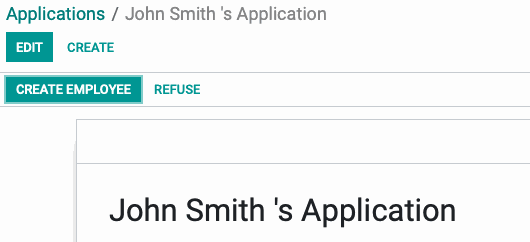
Clicking on Create Employee will open the Employee record template where the required information will be stored. For more information, see our Employee Setup Guide documentation.
Once John is an employee, we gain a smart button in the top right of the application, linking to his employee record.

Applications will be stored here as needed, and can be archived when no longer useful. Conveniently, if at some point John seeks a promotion, the application can be edited to restart the hiring procedure for a different position, while retaining the historical data on why John was hired in the first place.